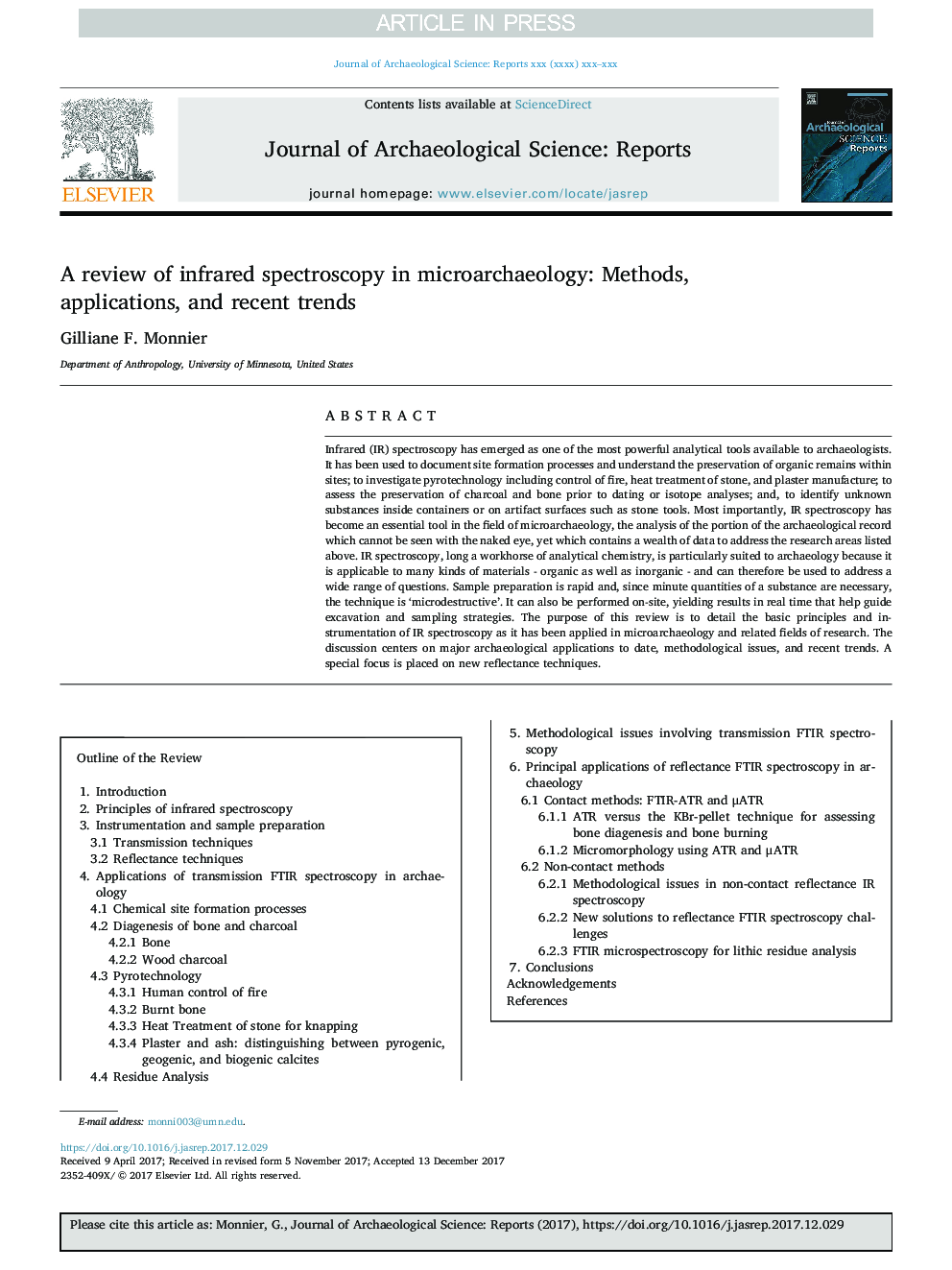| Article ID | Journal | Published Year | Pages | File Type |
|---|---|---|---|---|
| 7444461 | Journal of Archaeological Science: Reports | 2018 | 18 Pages |
Abstract
Infrared (IR) spectroscopy has emerged as one of the most powerful analytical tools available to archaeologists. It has been used to document site formation processes and understand the preservation of organic remains within sites; to investigate pyrotechnology including control of fire, heat treatment of stone, and plaster manufacture; to assess the preservation of charcoal and bone prior to dating or isotope analyses; and, to identify unknown substances inside containers or on artifact surfaces such as stone tools. Most importantly, IR spectroscopy has become an essential tool in the field of microarchaeology, the analysis of the portion of the archaeological record which cannot be seen with the naked eye, yet which contains a wealth of data to address the research areas listed above. IR spectroscopy, long a workhorse of analytical chemistry, is particularly suited to archaeology because it is applicable to many kinds of materials - organic as well as inorganic - and can therefore be used to address a wide range of questions. Sample preparation is rapid and, since minute quantities of a substance are necessary, the technique is 'microdestructive'. It can also be performed on-site, yielding results in real time that help guide excavation and sampling strategies. The purpose of this review is to detail the basic principles and instrumentation of IR spectroscopy as it has been applied in microarchaeology and related fields of research. The discussion centers on major archaeological applications to date, methodological issues, and recent trends. A special focus is placed on new reflectance techniques.
Keywords
Related Topics
Social Sciences and Humanities
Arts and Humanities
History
Authors
Gilliane F. Monnier,
